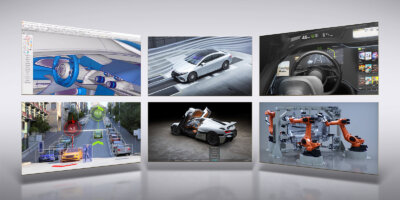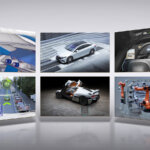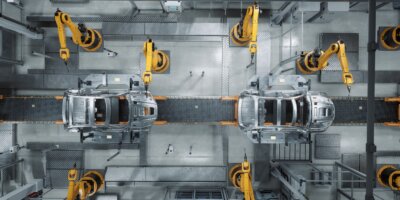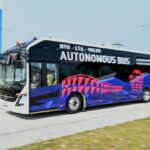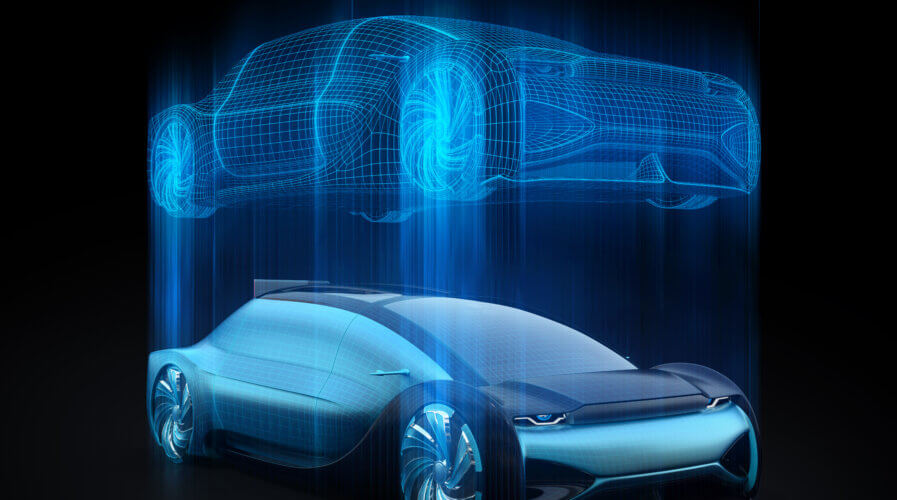
Virtual twin is revolutionary to automotive design. (Image by Shutterstock)
Cars of the future: how virtual twin technology is reinventing automotive design
- Virtual twin technology is not the same as digital twin technology.
- A virtual twin represents the shape, dimensions and properties of a physical product or system.
- Vehicle manufactures are using the technology to build and design vehicles sustainably.
Automotive design is traditionally a laborious process. Engineers and designers have often spent months or even years creating the perfect vehicle design, long before the public sees a vehicle. The entire process needs to highlight the details of the potential model. This includes designing the interior and exterior of the vehicle as well as the components that will make it work.
Automotive design as a process goes back more than a century, when the plans for the first vehicle were illustrated. Since then, the concept of designing a vehicle has evolved. Today, automotive design no longer just involves drawing sketches and preparing clay models of a concept vehicle. Designers and engineers need to collaborate to ensure that the performance of the vehicle can match the desired design.
That’s where it can be challenging. While automotive engineers are able to do a lot more of the work digitally, they still need to ensure that the design system they use can support the many layers of design and materials they intend to work with. Designing a vehicle today means being able to easily make changes to the design on software, instead of starting from scratch with drawings or models.
One way of making this process a lot smoother is with Dassault Systems’ virtual twin technology, which is part of the company’s 3D experience platform. Virtual twinning is the use of technology to visualize, model and simulate entire environments of a sophisticated experience. Unlike digital twin technology that focuses on one specific subject, virtual twinning can facilitate sustainable business innovation across the full product lifecycle.
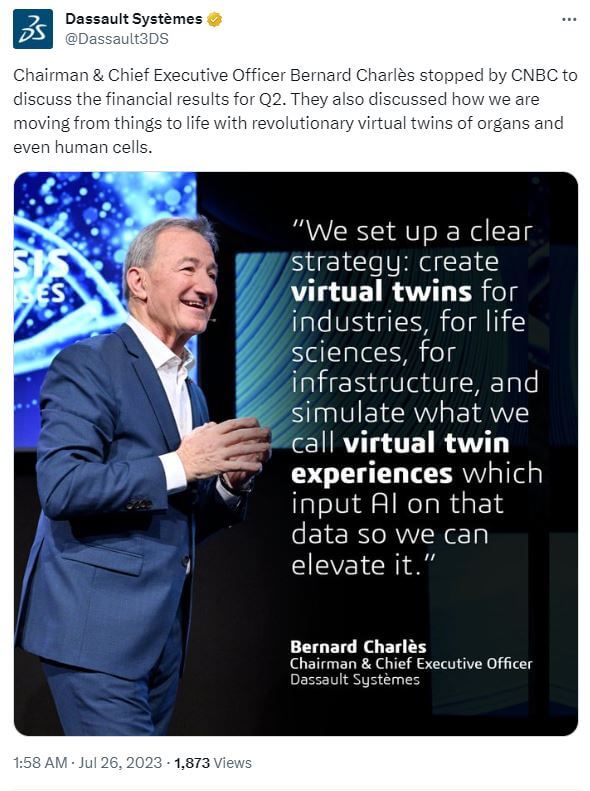
Virtual twins are not the same as digital twins.
Virtual twin technology explained
A virtual twin experience starts with designing a 3D model that represents the shape, dimensions and properties of a physical product or system. Simulations are run on that virtual model to explore how the product will behave when assembled, operated, or subjected to a range of events.
The continuous cycle of information between the virtual and real worlds achieves a closed loop, supporting the following benefits:
- Boost productivity & product quality – Accelerate critical processes by up to 30% and run unlimited tests to reduce product errors.
- Improve business resilience – Better understand risk exposure by running unlimited planning scenarios, explore more options and increase collaboration.
- Facilitate sustainable innovation – In silico development reduces waste and energy consumption. It also can continually feed usage data back into the design process, without needing physical testing and prototypes.
In the automotive industry, virtual twin technology can be used to design a car. Once a design is complete, the manufacturer can simulate it to check how resistant the design is to external elements, such as testing how the car would hold up under a crash in the snow, to determine whether it needs better quality braking mechanisms that meet safety standards.
Apart from automotive design, virtual twin technology can be used to investigate how different suppliers impact the overall carbon emissions levels of the end product and how the supply chain will be impacted by the choice made.
We love @3DSCATIA. And we love @3DS_SIMULIA. What happens when you combine them both with virtual twins? Really cool stuff. 😍 Chris Devries and Debarun Das walk us through some complex but fascinating innovation. pic.twitter.com/oMaZqL0YS0
— Dassault Systèmes (@Dassault3DS) September 5, 2023
The entire process is done through a single, integrated platform. A platform that does not require a company to change from the design system to the data management system to the simulation system during the development and manufacturing processes of a vehicle.
The technology also establishes a continuous feedback loop, with data coming in from the product or process in its real-world usage. Teams can analyze this data, run additional tests and make changes to create constant improvement and to prevent unexpected downtime.
Building the vehicle of the future

Guillaume Gerondeau, vice president of transportation & mobility Asia at Dassault Systems
According to Guillaume Gerondeau, vice president of transportation & mobility Asia at Dassault Systems, there is actually a lot more work to be done in automotive design today, especially with the growing demand for electric vehicles (EV) and sustainability.
In fact, Gerondeau pointed out that the EV industry has five years to achieve what combustion vehicles had 100 years to develop. This refers particularly to engine design. Combustion engines have been around for the longest time and as the world moves towards lowering carbon emissions, battery-powered EVs are the future for most countries.
However, the automotive industry would need to speed up the entire process of designing and building EVs in order to meet their sustainable goals. As such, there has been a surge in new EV startups around the world. More vehicle manufacturers are also making the switch towards developing EV models.
The virtual twin technology enables them to speed up the entire process. Developers and engineers can use virtual twins to design and simulate various developments and components of EVs while ensuring sustainability. This includes trying out different materials, designs and such to see which works best virtually.
The technology also has some AI built into it, which can help fill in the blanks for some areas in design. However, Gerondeau was quick to point out that while AI is built into the software, most of the work is still dependent on the automotive teams. The collaboration enabled by the software means multiple teams are able to work on the same design at the same time as well.
Gerondeau also explained that the 3D experience platform can support supply chain resilience strategies. This is achieved by using the technology for operations excellence in carbon footprint reduction, waste management, and energy efficiency as well as using bio-sourced material. And this is where the automotive supply chain can enhance sustainability.
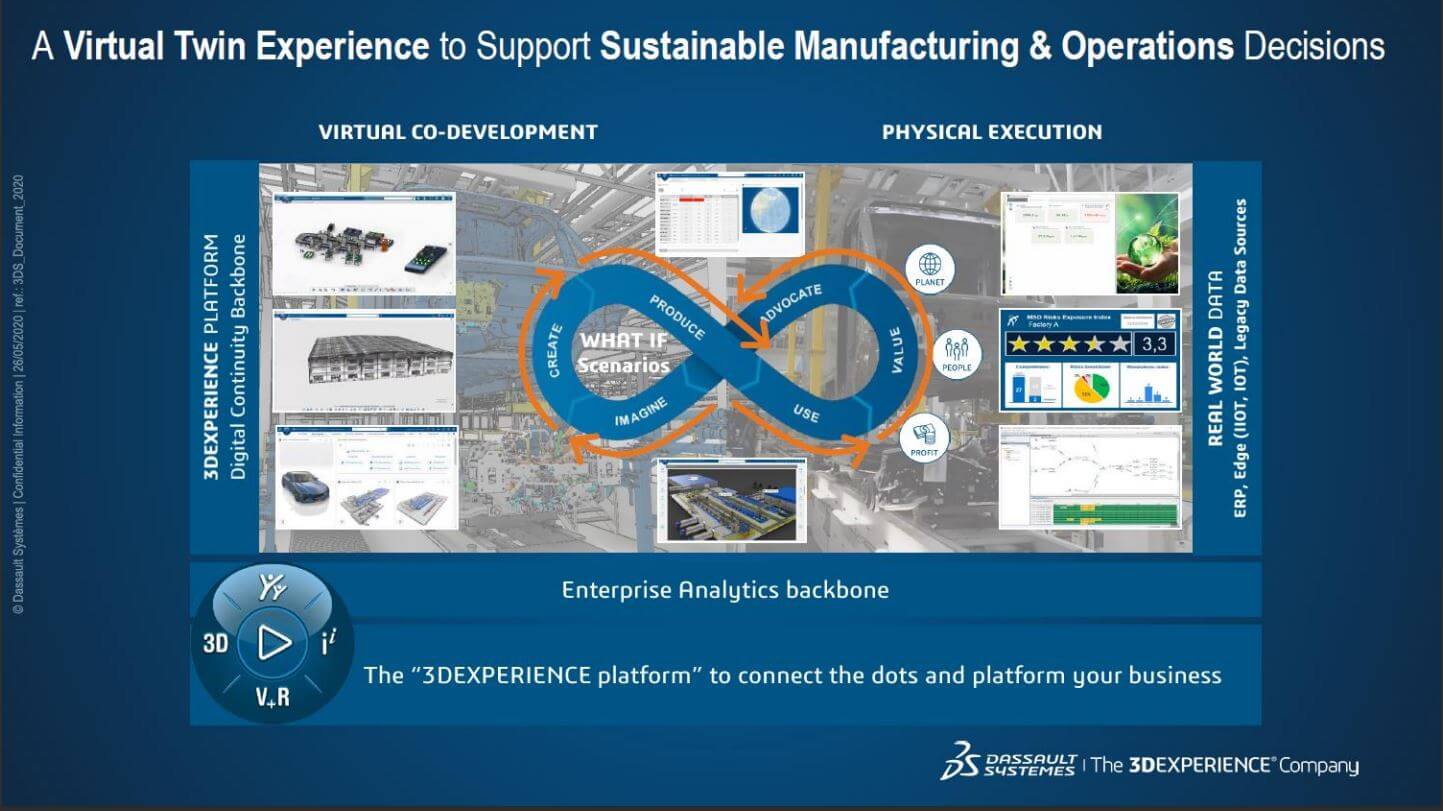
The 3D experience platform can support supply chain resilience strategies. (Source – Dassault Systems)
From automotive design to supply chain sustainability
As virtual twin technology is performing every aspect of the automotive design virtually, the same technology can also be used to deliver visibility on the supply chain. For example, Gerondeau said that car manufacturers can look at the various components and materials used in developing the car and test it on the system to see if it is sustainable or not.
From there, they can decide on how to work best with their original equipment manufacturers (OEM) and such. The automotive supply chain is then focused on meeting sustainability requirements. Put simply, OEMs of a particular manufacturer will be contributing to sustainability in the long run as they will be using the technology to improve their manufacturing capabilities.
This is where Southeast Asia has potential in the automotive industry. The region may not be the biggest vehicle manufacturer in the world, but it certainly plays an important role in the automotive industry supply chain.
For example, Malaysia is home to many OEMs, as well as T1 and T2 suppliers to vehicle manufacturers around the world. With virtual twin technology, these companies can improve their supply chain in different areas such as improving prototyping speed, reducing lead time, improving performance for simulation, improving electro-mechanical integration, capturing design intent, improving documents and having accurate costing as well as having accurate representation of 3D assembly design.
Simon Ng, partner sales director, Asia Pacific South at Dassault Systems, who oversees the Malaysian market, also mentioned that there is a strong opportunity for Malaysia to move up the industry value chain from low-cost production to high-value innovation.
“Vehicle manufacturers can leverage the current automotive supply chain in Malaysia and the region as well as leverage the large electrical and electronics industry supply chain in Malaysia. There are also various government initiatives to upskill in software, empower startups and encourage new EV ecosystems to adopt virtual twin experience technology,” said Ng.
READ MORE
- 3 Steps to Successfully Automate Copilot for Microsoft 365 Implementation
- Trustworthy AI – the Promise of Enterprise-Friendly Generative Machine Learning with Dell and NVIDIA
- Strategies for Democratizing GenAI
- The criticality of endpoint management in cybersecurity and operations
- Ethical AI: The renewed importance of safeguarding data and customer privacy in Generative AI applications

